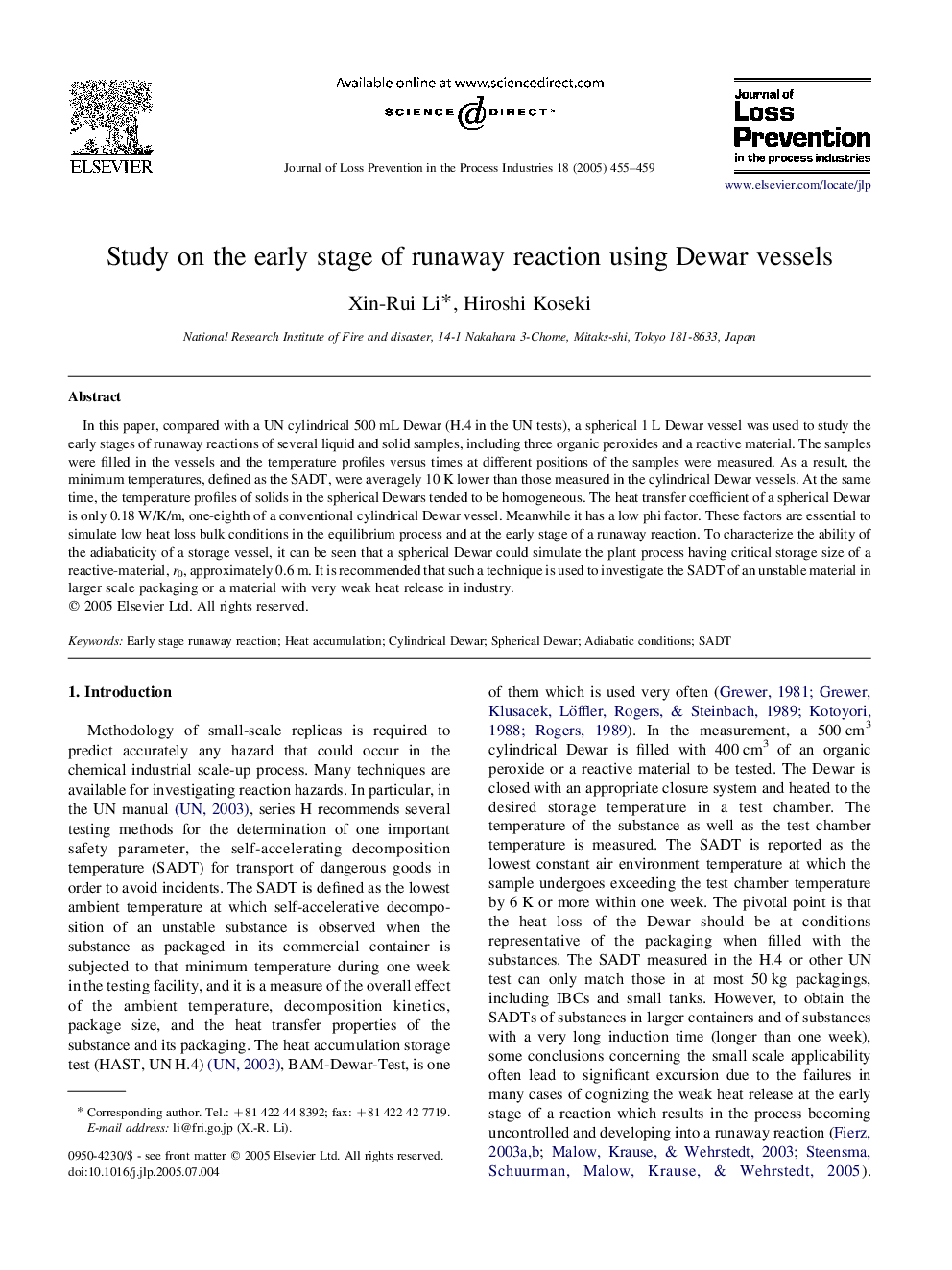| Article ID | Journal | Published Year | Pages | File Type |
|---|---|---|---|---|
| 9675127 | Journal of Loss Prevention in the Process Industries | 2005 | 5 Pages |
Abstract
In this paper, compared with a UN cylindrical 500Â mL Dewar (H.4 in the UN tests), a spherical 1Â L Dewar vessel was used to study the early stages of runaway reactions of several liquid and solid samples, including three organic peroxides and a reactive material. The samples were filled in the vessels and the temperature profiles versus times at different positions of the samples were measured. As a result, the minimum temperatures, defined as the SADT, were averagely 10Â K lower than those measured in the cylindrical Dewar vessels. At the same time, the temperature profiles of solids in the spherical Dewars tended to be homogeneous. The heat transfer coefficient of a spherical Dewar is only 0.18Â W/K/m, one-eighth of a conventional cylindrical Dewar vessel. Meanwhile it has a low phi factor. These factors are essential to simulate low heat loss bulk conditions in the equilibrium process and at the early stage of a runaway reaction. To characterize the ability of the adiabaticity of a storage vessel, it can be seen that a spherical Dewar could simulate the plant process having critical storage size of a reactive-material, r0, approximately 0.6Â m. It is recommended that such a technique is used to investigate the SADT of an unstable material in larger scale packaging or a material with very weak heat release in industry.
Related Topics
Physical Sciences and Engineering
Chemical Engineering
Chemical Health and Safety
Authors
Xin-Rui Li, Hiroshi Koseki,
